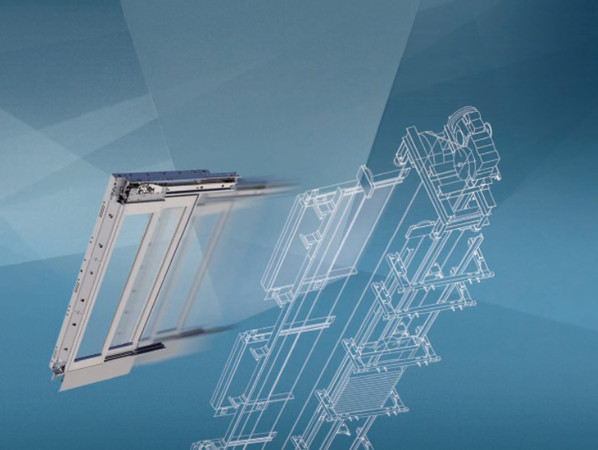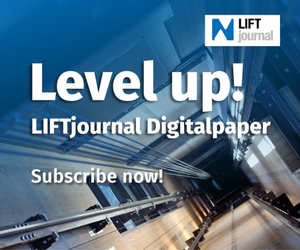BIM in lift technology: a change of perspective
“Digital twins” of lifts and buildings represent a new dimension of digitalisation – a challenge and opportunity for everyone who plans, constructs and operates lifts.
In general, the aim of digital twins is to collect and preserve all relevant information or references to it in a central location. A "glimpse into the model" alone is already helpful for almost all processes related to lift technology. To ensure such a digital twin is capable of versatile use, the model has to be correctly designed and its data properly maintained.
Buildings and lifts built in reality are the result of many heads and hands – this also applies to their digital twins. For example, improved presentations, well-coordinated planning, well-founded comparisons of versions or the simulation of different scenarios can be created. Digital twins are the foundation for intelligent building operation and needs-based maintenance.
Components of a digital twin
Digital twins are frequently created long before their analogue equivalents. A lift model is a so-called "specialist model"; the respective lift planning department is responsible for it. In the openBIM process, an exported model serves as a basis for the other parties involved in the planning for their particular plannings.
Consequently, it is called the "reference model" and not changed by others. For example, if you assemble different specialist models in a model viewer for coordination, the combined model created in this method is also called "coordination model".
Standardisation
 Photo: © DigiPara
Photo: © DigiParaIf all models are exclusively created and exchanged with one software program, this is known as "closed BIM". If they are created by different software programs, the method is called "open BIM". As is already the case with CAD and PDF, uniform interfaces and data formats as well as standardised model contents are needed for international non-proprietary, openBIM model exchange.
In 2000, the buildingSMART organisation created the IFC (Industry Foundation Classes) format and since then has further developed it continuously.
The planning sector currently uses the IFC Version 2x3, partly Version 4. However, IFC does not yet provide everything needed for modelling and creating content for all BIM use cases. As an open format, IFC can be extended by additional individual parameters and parametersets. As a result, all information needed can then be transported by project-specific definitions.
Binding standard
In order to be able to move from project-related proprietary additions to non-proprietary formats, the open and international standard must also apply to the planning, construction and operation of buildings and lifts in Germany and include all sectors. Consequently, the IFC standard IFC4 ADD2 TC1 has been included in the ISO standard ISO 16739-1:2018, in the DIN standard DIN EN 17549-1:2020-10 (draft) and is taken into account in the VDI guideline 2552, with supplementary specifications.
Apart from specific BIM use cases, the sub-sheets of Sheet 11 of the VDI 2552 guideline series also describe the expansions of the IFC standard deduced from it in terms of specific attributes. Among other things, this includes information about sector-specific and national characteristics.
Guideline draft planned for second quarter
The "VDI / bS 2552 Sheet 11.5 Building Information Modeling – information exchange requirements; lift technology" is expected to be published in the second quarter of 2021 as draft guideline. It describes the phases pre-planning, offer planning and execution planning. Apart from the processes needed for each phase, it describes the input required and the modelling and output required in each use case.
In addition, the collaboration between the lift technology model and building model is described and the responsibilities are defined. The draft guideline offers the option of participating in a public objection procedure (more information: vdi.de / 2552).
All interested parties can participate in the VDI guideline work. The participation has two advantages: You can help to design the future standard and in addition get an insight into the future developments.
Dipl.-Ing. architect Andreas Pilot is BIM-Manager, head of the BIM studio in the Department of Architecture at the Technical University of Darmstadt and chairman of the guideline committee VDI Sheet 11.5 BIM-lift technology.
BIM: Building Information Modeling, BIM for short, is a method that enables collaborative and joint planning, construction and operation of buildings. Data is stored digitally, structured and centralized. BIM is based on a 3D computer model.
vdi.de/ehrenamt
More information: BIM in lift technology: where to begin?


























Write a comment